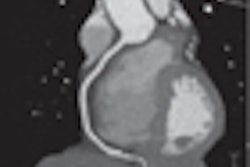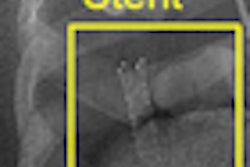Interventional radiology is tailor-made for an era of constrained budgets and patients who must hurry back to their daily lives. To that end, some of this year's most intriguing image-guided interventional techniques at the RSNA 2010 meeting promise to make interventional procedures safer, faster, and more economical than ever before, while offering shorter hospital stays -- or none at all if possible.
Whether it's cancer therapy, venous or spine interventions, vascular imaging, drug therapy, or fibroid treatment, the benefits of interventional technology versus open surgery (or ongoing pharmacologic therapy in the case of atrial fibrillation) are significant. And patients are lining up for the procedures.
This year's RSNA scientific sessions reflect the energy that is driving innovation in interventional radiology and the streamlining of procedures that are mainstays of the interventional toolkit. Examples include:

New techniques for unresectable hepatocellular carcinoma: Transarterial chemoembolization is standard, but transarterial ethanol ablation is a promising technique that just might provide better outcomes, a group from Hong Kong will report.
For some highly vascularized head and neck tumors, Onyx embolization is safe and more effective than standard embolization with polyvinyl alcohol, according to a group from Munich. The black color of Onyx helps identify masses as well.
In the breast, French investigators have found they can biopsy lesions they couldn't even see on 2D mammography, thanks to 3D breast tomosynthesis and a well-integrated biopsy system.
See presentation information below for more on these sessions.
Other studies are focused on finding usable new information in existing image data: In the liver, for example, hepatocellular carcinoma ablation has traditionally been limited by the inability of ultrasound to visualize smaller lesions when the time comes to ablate them. But fusion imaging can combine available images from multiple modalities, allowing the lesions to be treated with radiofrequency ablation. Methods that focus on seeing image data better include:
- Research from Italy on a new real-time fusion technique that combines ultrasound with CT or MR to find what was missed on ultrasound alone
- A study by radiologists from Mexico, who are predicting hepatocellular carcinoma recurrence after radiofrequency ablation by analyzing attenuation with CT images acquired immediately after the procedure
- Research from Canada that showed an association between arterial diameter and perfusion in aneurysmal subarachnoid hemorrhage patients that helped predict the utility of intra-arterial therapy
See presentation information below for more on these sessions.
This being RSNA, there is much to see and hear beyond the scientific sessions. We recommend this year's opening session. The Annual Oration in Diagnostic Radiology will cover innovative new techniques in the evaluation and management of focal pulmonary lesions. The talk by Christian Herold, MD, a professor of radiology at the Medical University of Vienna, will be held in the Arie Crown Theater (Sunday, November 28, PS10, 8:30 a.m.-10:15 a.m.).
In Hot Topics, a showcase of quality improvement projects to be presented on Monday, November 29, includes a presentation on patient safety for interventional radiology (4:45 p.m-4:55 p.m., SI24C, Room E353A). This is followed by a presentation on safety and efficiency during vascular interventional procedures (5:15 p.m.-5:25 p.m., SI24F, Room E353A).
Refresher course highlights include:
- A hands-on workshop in techniques for interventional sonography and thermal ablation (Sunday, November 28, 2:00 p.m.-3:30 p.m., RC152, Room E264)
- A hands-on workshop in ultrasound-guided interventional breast procedures (Monday, November 29, 8:30 a.m.-10:00 a.m., RC252, Room E264)
- A course on breast interventional procedures, including stereotactically guided breast biopsy, ultrasound-guided biopsy, and pathology management decisions (Tuesday, November 30; 8:30 a.m.-10:00 a.m.; RC315A, B, and C; Room E450A)
- A course on interventional CT using navigation and robotics tools (Tuesday, November 30, 4:30 p.m.-6:00 p.m., RC432C, Room N228)
- A course on new MR-guided interventional therapies, including interventional devices, interoperative procedures, and percutaneous and catheter-based procedures (Thursday, December 2, 8:30 a.m.-10:00 a.m., RC632A, Room S403A)
- A course on interventional radiologic management of traumatic abdomen and pelvis, including bleeding and vascular injury (Friday, December 3, 8:30 a.m.-10:00 a.m., RC808C, Room N226)
Notable education exhibits in the Lakeside Learning Center include:
- Preoperative Breast Interventional Procedures for the Tailored Breast Conserving Surgery: Pictorial Review of Preoperative Localization Procedures and Appropriate Indications (LL-BRE2013)
- CT-guided Transthoracic Core Needle Biopsy in the Molecular Profiling Era: Tips and Tricks (LL-CHE2140)
- Approaches to Accessing Radiologic Nodal Stations of the Mediastinum and Hila: A Pictorial Review (LL-CHE2154)
- Imaging-guided Percutaneous Parenchymal Liver Biopsy: What Every Radiologist Should Know (LL-GIE2296)



















